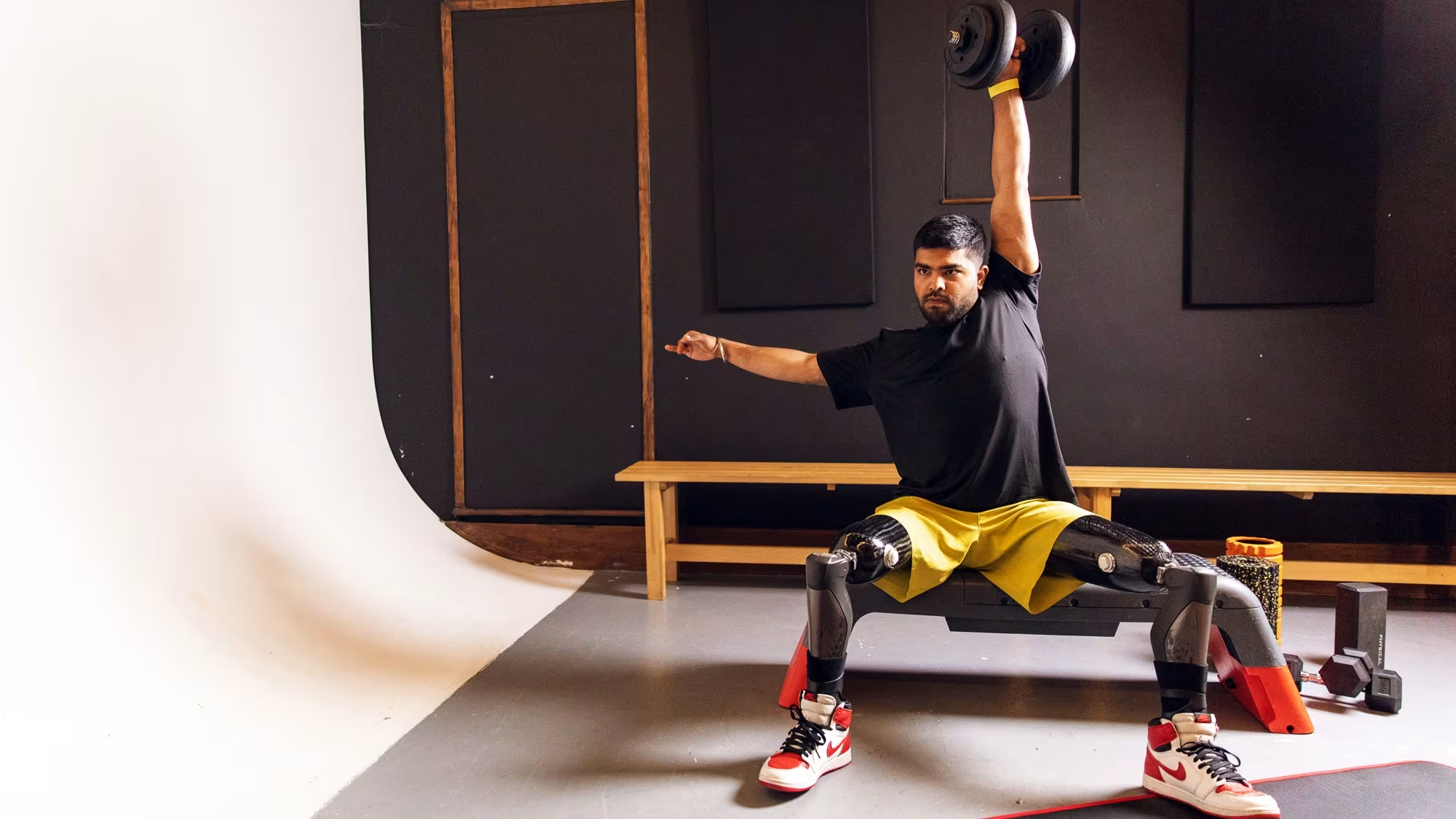


Mike's C-Leg Story
'Being diagnosed with bone cancer twice in a lifetime is hard, but having your leg amputated is even harder; fast-forward a few years and my prosthetic leg is a part of my life and has enabled me to still be a hands-on dad'
Active teenager Mike Stoneman was diagnosed with bone cancer at the fledgling age of 18. Fortunately doctors were able to remove the tumour in Michael’s left leg and although his mobility was slightly restricted, he went on to have twenty years of full mobility.
‘I was devastated when I was told the news, as an active 18-year-old boy who enjoyed cross country running, football and in particular cycling it was a hard blow to take. Over the 20 years that followed I wasn’t able to run or play competitive sport, but I was able to be mobile in a day-to-day way and was generally grateful that I had not only survived the cancer, but survived it with both legs,’ says Mike.
Twenty years later and Mike was a dad to three young children and worked full-time as a senior manager in the Learning and Skills Council. He attended annual GP check-ups on his left leg and on this particular visit was told that the cancer was back.
‘It was a shock to hear. I’d been ok for 20 years so I never expected to be told the cancer was suddenly back. I’d had several operations on my left leg over the 20 years and each restricted the mobility of it further, meaning my knee only bent to a 45 degree angle, but other than that it was functioning well.’
Mike says the doctors advised they’d try to remove the tumour from the calf muscle and save the leg once more, but there was a 50/50 chance of them having to amputate the leg if the cancer had spread further into the leg. Mike told doctors that if they had to remove his leg then they had his permission. ‘I had done my research so I knew that there were good prosthetics available so I could cope if that was the outcome,’ he says.
After the operation Mike’s wife Sarah was told by clinicians that the cancer was too extensive throughout his leg, as they feared, so they had had to amputate the leg after all; and several hours later Mike awoke to his find his left leg had been removed above the knee.
When a leg has been amputated the stump that is left is swollen and sore and needs time to heal so a prosthetic leg cannot be fitted for at least eight weeks. ‘The eight- week wait was tough. I was suffering from phantom limb pain, which is agonising throbbing in the amputated limb and occurs when the nerves that would normally innervate the missing limb cause pain. It was truly agonising and didn’t go away until I got my prosthetic leg,’ says Mike.
Mike says he took medication for the pain but the medication made him tired. ‘I wasn’t my usual self and for those eight weeks I wasn’t functioning as a father. I just locked myself away in my bedroom to deal with the pain. If I wasn’t in pain then I was asleep as the tablets made me drowsy.’
Mike underwent physiotherapy twice a week at the Disablement Service Centre (DSC) in Portsmouth and within several months was able to wear a prosthetic limb. ‘I put a lot of energy into my physiotherapy sessions as I knew what the outcome would mean. A prosthetic limb contractor, Ottobock, was based in the centre I did my physio and they were incredible in prescribing a limb based on my lifestyle and how active I was and my feelings towards its look.’
Once Mike’s stump had reduced in size Ottobock measured it and made a limb to fit its size. Mike then had several physiotherapy sessions with the new limb in order to learn how to walk, sit and be mobile using the prosthesis.
‘I tried several different versions of the socket that was connected to the prosthetic limb as you can get some that are held on with a suction socket, and others that held together by a belt that is worn around the waist. For me I was more comfortable with the one that was held together by a belt around the waist.’
A year after wearing the prosthetic Mike was upgraded to a newer, more intelligent version, named the C-leg.
‘The C-Leg suited my lifestyle better as I had young children. In essence it’s an intelligent knee and has been designed with the objective of replicating the human gait as closely as possible, allowing you to walk freely down the stairs, whereas before I would have had to take one step at a time and manually lift my leg over each step, so to have something has imaginative as this is great!’ he says.
Mike says that although his life has been a bumpy one he’s incredibly happy with it. ‘I have had the C-Leg since 2005 and it has enhanced my life incredibly and enabled me to be the father that I was before the amputation. Ottobock has even given me a specialist prosthetic swimming leg which is made from laminated material so it can be immersed in water for when I take the children swimming.
‘Ottobock has truly catered for all of my needs and helped me to have a lifestyle which incorporates what I truly want out of life. I’m currently learning how to cycle again and I am regular player of Portsmouth’s Sitting Volleyball team and who knows where the future will lead for me then on, but for now I’m more than content with the opportunities that are before me. Life really is exciting again!’
Discover the Kenevo and C-Leg 4
Trust, evolve and thrive with Ottobock.
Ottobock has been proudly providing the C-Leg 4 to medium - highly active individuals through the NHS since 2016. More recently less active individuals or those beginning their rehabilitation journey have been fitted with the Kenevo. Our signature Microprocessor Knee (MPK), C-Leg 4 offers lower limb amputees the technology and performance to live the life they want while the Kenevo aids amputees in improving their mobility and gaining independence. Keep reading to learn more about these solutions and the process of being fitted with an MPK through NHS funding.

